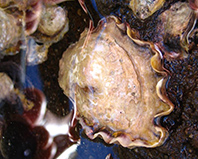Read the latest information on
Foot-and-mouth disease

Photo: Steve Wortley
A state-wide livestock standstill is currently in place for spat (juvenile) oysters in Tasmania following an outbreak of Pacific Oyster Mortality Syndrome (POMS) in Pitt Water, Tasmania.
On 28 January 2016, a grower reported increasing mortality rates in oysters at one of his leases to Biosecurity Tasmania. The POMS virus was confirmed by laboratory tests conducted by Biosecurity Tasmania, and now a state-wide standstill for any spat (juvenile) oysters and farming equipment is in place.
As of 4 February, testing has also confirmed POMS at a site in Pipe Clay Lagoon. Oysters at this site had been transferred from the site at Pitt Water only the day before the mortality event was first reported. This was determined through the tracing process being undertaken following the detection of POMS.
Biosecurity Tasmania is working closely with oyster growers and Oysters Tasmania to monitor for any further signs of the disease. All state and territory Chief Veterinary Officers met on 2 February 2016 to determine the next course of action to limit the spread of the disease.
Animal Health Australia’s Executive Manager, EAD Preparedness and Response, Dr Peter Dagg, said the outbreak and the subsequent actions that have been taken to minimise the spread of POMS mirror how a terrestrial emergency animal disease (EAD) incident would be handled, demonstrating the significant impact that these types of outbreaks can have.
“With stock losses for the affected oyster lease now in the millions, and recent decisions by the New South Wales and South Australian governments to ban importation of Tasmanian spat oysters, the impacts can be clearly seen. Thankfully, outbreaks of emergency terrestrial and aquatic animal diseases do not happen very often here in Australia, but this latest outbreak of POMS shows that the devastation caused can be swift and far reaching when an EAD occurs,” Dr Dagg said.
To assist producers in preparing for an EAD the Farm Biosecurity Program website contains an important manual, Preparing your business to survive an emergency animal disease outbreak. This document outlines what happens during an outbreak and highlights the main risks for your business and the actions you should take to prepare and respond to an outbreak and producers are encouraged to read it.
To download a copy of the EAD risk management manual, visit www.farmbiosecurity.com.au/manuals
To keep up-to-date about the POMS outbreak in Tasmania visit the DPIPWE website.